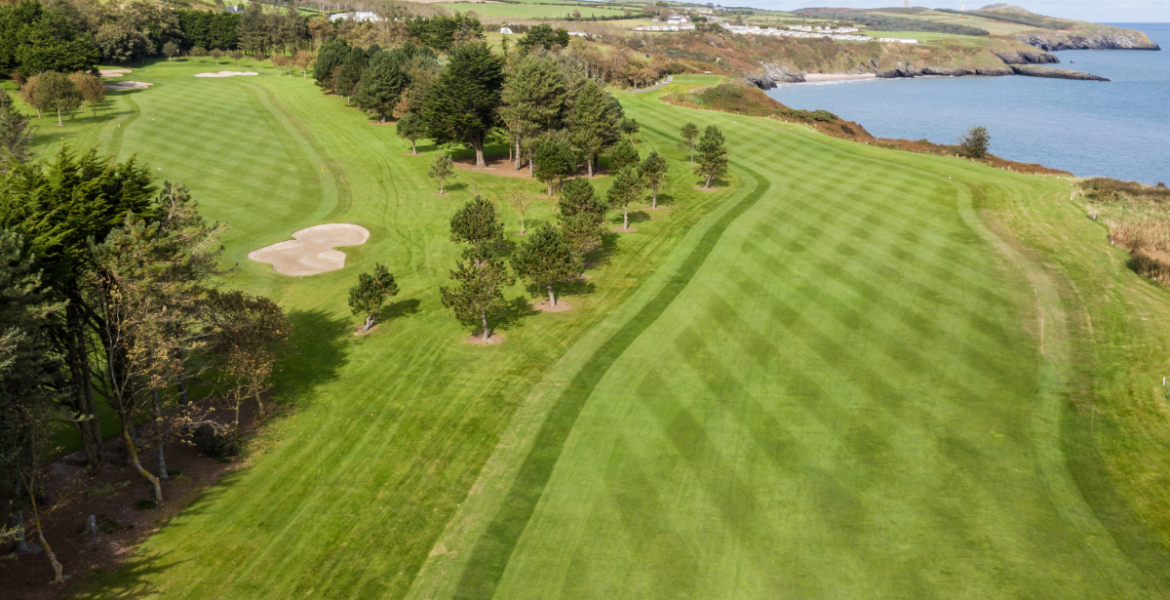
June 7, 2024
How to make your golf course more sustainable
Despite some rowing back of climate pledges by the UK government last September, the direction of travel remains clear – the UK intends to hit net zero emissions by 2050.
Whether it’s transport, where a ban on sales of new petrol and diesel cars and vans comes into effect in 2035, or energy, where there’s a move towards cleaner forms of energy, including offshore and onshore wind, investment, innovation and compromise are all required to meet the ambitious targets.
What it means for golf
Golf courses are already playing their part, but face a real challenge when it comes to balancing investment in new technology with recent rising costs. All the while, the game continues to be targeted by environmental activists, developers and those who threaten golf businesses freedom to operate.
Put simply, golf courses need to do more and say more in order to prove their environmental commitment and credentials.
Here’s some areas where you can make a start…
Water: As climate change leads to hotter summers and drought in some areas of the country, water supplies will come under increasing pressure.
In order to be more frugal with water across your golf course, you should look to measure and manage at regular intervals and in real-time to see where reductions can be made. Adding a rain sensor to your irrigation system – so that if it rains a certain amount the system does not come on – can vastly help reduce water use.
By setting your own reduction targets, you can also unite your greenkeeping team behind a common goal and report back to club stakeholders and the wider public.
Machinery: Aging diesel fleets can be a drain on club finances both in parts, repairs and fuel costs. But an electric future is not too far into the distance. An all-electric fleet helped prepare St Andrews Old Course for the 2022 Open Championship, which was estimated to have reduced carbon emissions by as much as 90%. We too have made strides towards a cleaner, greener way of working, having recently purchased a number of electric greens mowers and utility vehicles.
While paying for this technology can be a difficult hurdle to overcome, the long-term benefits to the planet, and to the club’s cost base, are clear.
Pest management: Pests afflict the vast majority of golf courses at varying degrees of severity and can often be the difference between a green running smoothly or not. In recent seasons a changing climate has extended the breeding lifecycles of some pests and this, alongside the phasing out of a number of products designed to address their impact, has meant greenkeepers have needed to be adaptable in their approach.
Looking for ways to help the underlying health of the turf, for instance by improving the airflow around greens, will help to improve surfaces and extend the playing season.
As further regulation will continue to challenge course managers’ ability to manage pests and their impacts, using data and having a robust agronomic plan and integrated pest management strategy in place is vital to ensure your prize product is in the best condition possible.
Biodiversity and Pollinators: Introducing or enhancing pollinator-friendly features is a great way to increase biodiversity across your golf course and support a more robust ecosystem. In meadow areas, rather than strict mowing, allowing wildflowers to thrive not only adds aesthetic charm but also attracts vital pollinators like bees and butterflies. Choosing native plants suited to the local climate and soil conditions further boosts the effectiveness of meadow care.
Beyond that, integrating pollinator-friendly elements into landscaping, such as diverse trees and bulbs and planting these around focal points in areas around the pro shop or clubhouse creates inviting spaces for both golfers and pollinators. To further enrich biodiversity and ecological balance, think about minimizing herbicides and adopting a pesticide code tailored for pollinator well-being.
You could also go a step further in helping to support wild bees by providing designated nesting spots with native vegetation and suitable ground conditions.
Incorporating sustainable practices into course maintenance not only benefits the environment but also enhances the overall experience for players and surrounding communities. It sets an example for responsible land management and showcases a commitment to a greener future. Ultimately, the journey toward sustainability requires a concerted effort and ongoing commitment from multiple club stakeholders, but, done well, can become an integral part of the identity and story of a club.
For more information on Carr Golf maintenance services and how we can help your course become more sustainable both in the short and long-term, get in touch.
